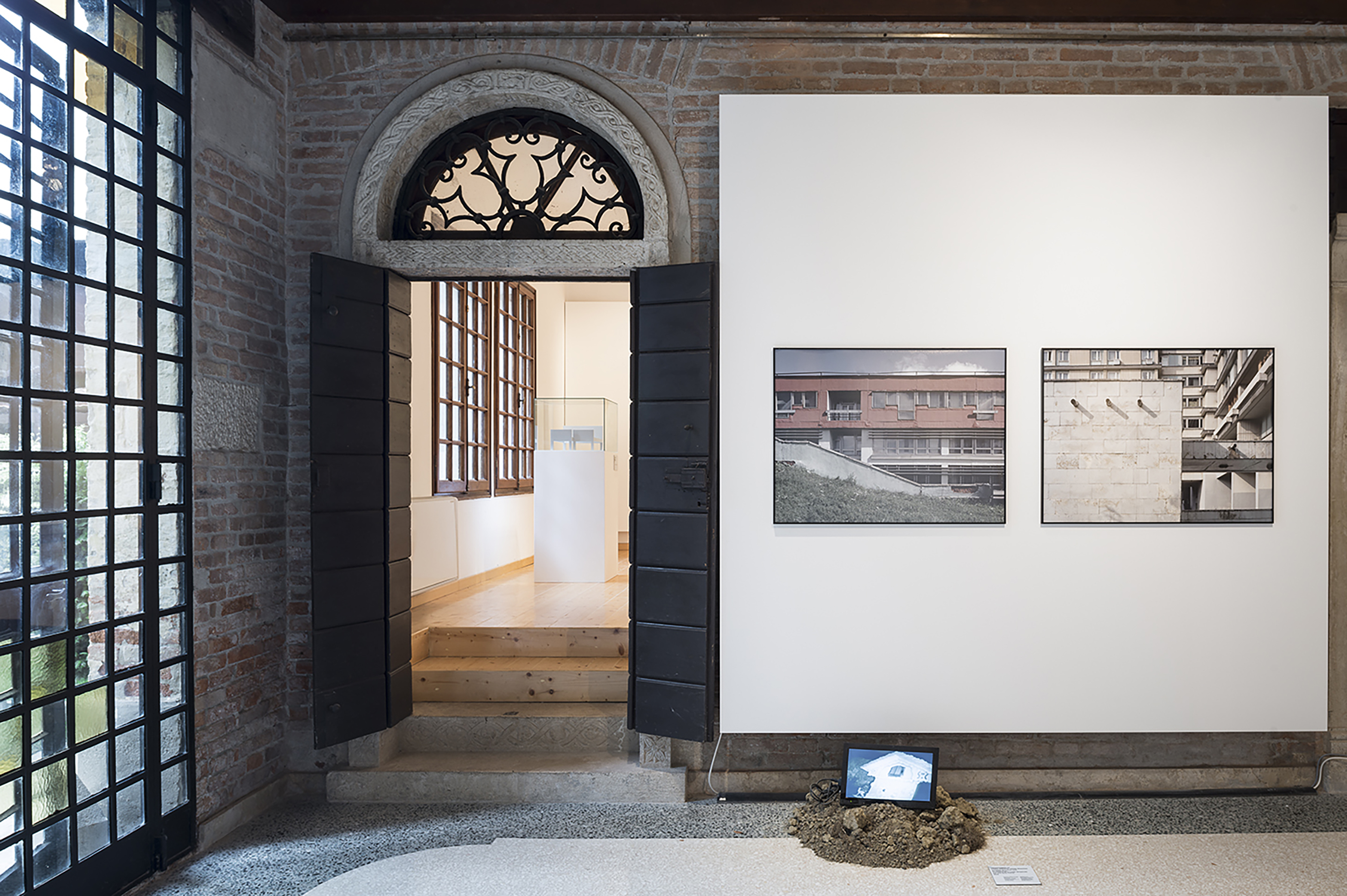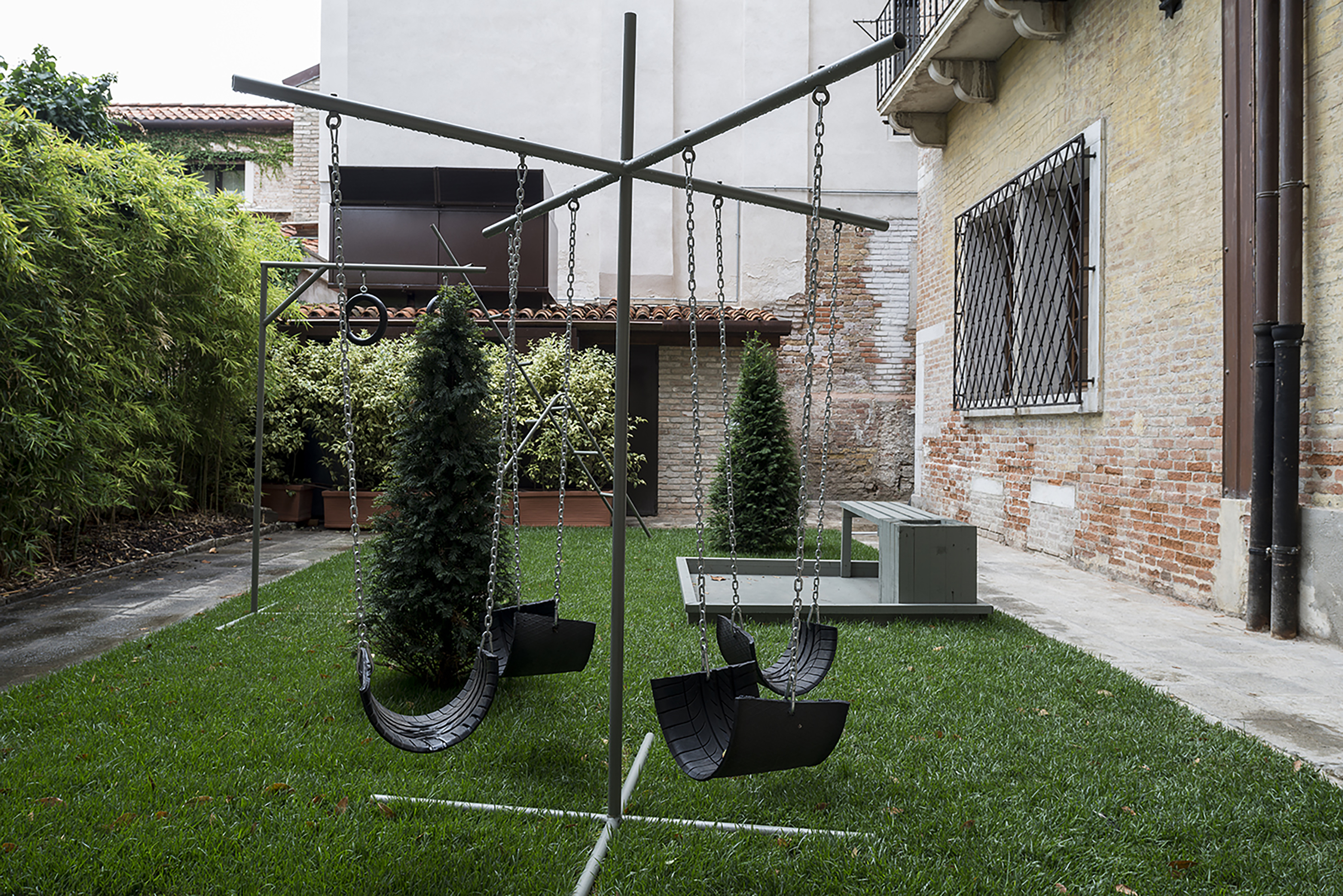The Way of Enthusiasts
The Way of Enthusiasts: a collateral event of the 13th International Architecture Exhibition la Biennale di Venezia.

This context‐rich, multi‐layered presentation, curated by Katerina Chuchalina and Silvia Franceschini, utilizes the architectural context of the biennale as a filter and lens through which to compile the scattered phenomena of the last decades of Russian art into a vital and comprehensive landscape.The Way of Enthusiasts explores the artistic discourse and spatial commentaries between artists and works produced during, and subsequent to, a specific historical and cultural period in Soviet Russia, namely the collapse of the mass social housing projects in the 1950s. It features such artists whose practices began to evolve in the ’70s and ’80s, under the particularly intense political and architectural circumstances of that time and further deals with the impact of the failure of such experiments on contemporary artists (post ’90s) both conceptually and practically.
Further, the exhibition utilises an urban and architectural framework as a way of constructing a parallel narrative to identify and illuminate the patterns behind the shift from the Soviet era to a capitalist, post‐ideological society. The fatal transformation of the Soviet urban landscape originated from Khrushchev’s famous 1954 speech to construction workers, where he envisaged idealized environments for suburban living in line with Russia’s industrial advances. The resulting microrayons (or microdistricts) seemed to offer a perfect way of integrating the social and the ideological. They were designed and built according to strict rules and regulations based around efficiency in living, working and production. Apartment blocks were standardized and pre fabricated in factories; smaller building companies were integrated into a conglomerate of construction giants, and all architectural competition was effectively eliminated. Such an approach created uniformity on an unprecedented scale, and assured long‐term domination of the landscape of Soviet cities.
For artists such as the Moscow Conceptualists, the breakdown of these public housing projects in the ’70s provided the first operational urban spaces for their collective actions and also became a source of inspiration, a way of balancing the shifted metaphysical gravity between the centre and the periphery. The actions of the Gnezdo group, for example, active for only five years (1975‐1979), indicated the peak of alternative art activity in Moscow, the profane absurdity of their street actions sketched out in many intonations of Moscow actionism. The SZ group (Vadim Zakharov / Viktor Skersis), also featured in this exhibition, enlaced the city through constellations of unnecessary and invisible communications.
Two decades later the fragile constructions of an architectural and social utopia were further swept away by the whirlwind developments of the 1990s. After the collapse of the USSR, dual waves of capitalism and liberty unleashed polarised constructions: radical, enthusiastic individualism on the one hand, and kitsch confusion on the other, both trademarks of this short epoch. The breakdown of the Soviet Union created new ways of living, which pushed art further into the streets, creating a new subversive artistic language, which physically utilized actionism and intervention, provocation, speculation and populism.Thus, in the art works of this era, we find many heroic‐comic attempts by artists to erect themselves on the sites of the absent or discredited monuments. Such actions involved re‐appropriating the abandoned space or point representing the pinnacle of power, as can be seen in the performances of Anatoly Osmolovsky where, in one, he is literally sitting on the shoulders of the monumental figure of Mayakovsky.

The subsequent generation of artists may be located logically outside the direct effects of territorial redistribution and resulting conflict, but the investigation of how their urban environments have been transformed — especially given the recent change to socio–political balance — has, and continues to be, an artistic concern. The city with its incongruity, the ‘poetry’ of aging and fatally unfulfilled expectations, is endlessly observed and meditated over in the works of Olga Chernysheva.
Simultaneously, other artists attempt to eradicate governmental control over public places. Such impulses are explicitly manifested in the work of David Ter‐Oganian, as he tries to delimitate the arena of control/non‐control. In his sketches, the grid of a notebook is used to measure the scale of the revolution.The chaos of Sergey Sapozhnikov’s installations — deliberately constructed in the ruined outskirts of the city of Rostov‐on‐Don — refer to the potential of liberation from the structure of organized space and codified behaviour.
Anastasia Ryabova searches for evidence of abandoned signs of former power representation in the city, and evokes new meaning by looking “back to the future” of collective practices, archiving and virtualizing the common ground through networks and community newspapers.
New instruments of socio‐political control and occupation of cities are extremely significant for Arseniy Zhilyaev, alongside the collective memory of Soviet living space with its common memorabilia and shared remnants of interiors and objects. His ambitious new piece for this show reconstructs a fully operational Soviet public laundry, a space typical of the shared facility provisions within constructivist communal housing and a feature of Soviet life where all aspects of private life had to be shared, until the collapse of the Union — within the new and unusual context of an historic palazzo in Venice.The question is will the local community use it as intended, or will the artificiality of the situation and presence within an art exhibition undermine its original function, another territory where an open democratic project can become relevant for a local socio‐political situation.
The exhibition also features a dedicated space providing extensive contextual resources and drawing on architectural expertise from Daria Paramonova and Kuba Snopek. A fully illustrated catalogue will be produced to accompany the exhibition.
The show’s title, The Way of Enthusiasts, takes inspiration from a Moscow landmark Shosse Entuziastov, an avenue that connects the city centre with residential districts. It is an old Russian road with the gloomy notoriety of having been one of the main routes to Siberian prisons and exile, and which was given the rather grand new name of Shosse Entuziastov (loosely translated as “the way of enthusiasts”) in the 1930s, as a way of looking towards a new world whilst romanticizing the past. Today, the name still echoes gloriously, but the new and decadent residences hide the melancholic fields of decaying buildings, and masks any traces of the great Soviet dream of public housing schemes, exposing the desperate gap between the plan and the ruins, the ruins and the plans.
Participating Artists
Alex Buldakov/Anastasia Potemkina, Olga Chernysheva, Alexandra Galkina, Kirill Gluschenko, GNEZDO Group, Andrey Kuzkin, Vladimir Logutov, Andrey Monastyrsky, MUKHOMORY Group, Anatoly Osmolovsky, Yuri Palmin, Alexandra Paperno, Alexander Povzner, Dmitry Prigov, Anastasia Ryabova, Sergey Sapozhnikov, Stanislav Shuripa, Xenia Sorokina, Alexandra Sukhareva, SZ Group, David Ter‐Oganyan, Vadim Zakharov/Niklas Nitschke, Arseniy Zhilyaev. With architects Daria Paramonova and Kuba Snopek